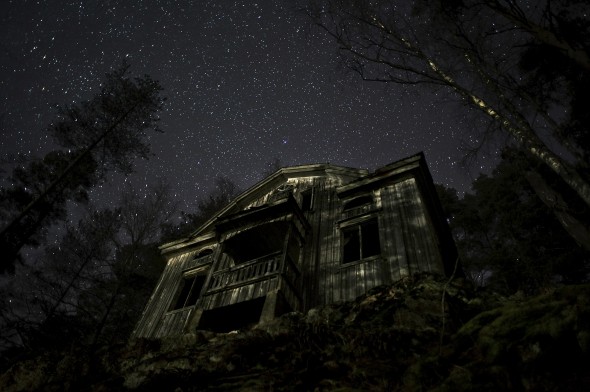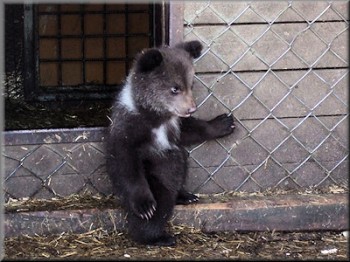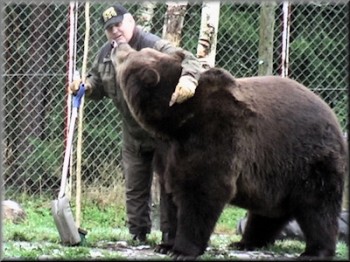Tag: Finnish nature
Petri Keto-Tokoi & Timo Kuuluvainen: Suomalainen aarniometsä [The Finnish virgin forest]
12 November 2010 | Mini reviews, Reviews
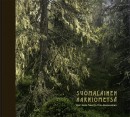 Suomalainen aarniometsä
Suomalainen aarniometsä
[The Finnish virgin forest]
Helsinki: Maahenki, 2010. 302 p., ill.
ISBN 978-952-5870-06-0
€ 48, hardback
This book explains the cultural significance of forests – particularly virgin forests – to Finns. That term is used to refer to old-growth forests in their natural state, characterised by trees of different ages, an abundance of decaying tree remains, and continuous incremental changes. Nowadays around four per cent of Finnish forests are in a natural or near-natural state, and light is being shed on their ecosystems and the history of the slowly vanishing virgin forests. They are associated with deep-seated values and a multiplicity of roles throughout history. To many artists forests have been a significant elemental force, worthy even of worship; peasants and the timber industry have exploited the virgin forests. The authors also consider whether answers to key environmental issues will be found in old-growth forests: safeguarding natural diversity and slowing climate change. In addition to illustrative material from the authors, the book contains photographs by award-winning photographers Ritva Kovalainen and Sanni Seppo.
Nature’s own
22 April 2010 | Extracts, Non-fiction
As night falls, the silence is broken by pattering of small feet on the greying windowsill of an old, abandoned house: entire families may live under the rotten floorboards. Houses now inhabited not by humans but by wild animals are observed by Kai Fagerström and Heikki Willamo
Extracts from Viimeiset vieraat. Elämää autiotaloissa [The last visitors. Life in abandoned houses, Maahenki, 2010] by Kai Fagerström, Risto Rasa & Heikki Willamo. Text by Willamo, poems by Rasa, photographs by Fagerström and Willamo
Some thirty years later I found the badgers’ cottage again – it wasn’t the same one, but the mood of my childhood still floated there. Grey walls and a shingle roof, bare gaping windows, the door creaking on its single hinge. Oak tree in the yard, lilacs flourishing wild. The forest was rapidly reclaiming its own behind the cottage. The mounds of sand beside the wall bases showed prints of strong-clawed paws and a number of paths, hardened from use, led into the woods. More…
Bear-faced cheek
16 April 2010 | This 'n' that
Spring is here at long last, and the bears have woken up: this frightening beast has got out of the lair in Kuusamo, at the Predator Centre in north-eastern Finland (800 kilometres from Helsinki).
Some of our readers may remember Niisku, the brown bear portrayed in the print version of Books from Finland, issues 4/2006 and 1/2007 – very sleepy, contemplating hibernation.
There are probably about a thousand bears in Finland, and they usually hit the hay (aka the spruce branches in their lair) in November. Tiny bear cubs are born in late January or early February. The family will emerge from the lair when the snow melts. Niisku gave birth to two babies in the spring of 2007.
The Predator Centre in Kuusamo is a private orphanage for wild bears, lynxes and wolverines which have been brought there after being injured and/or orphaned.
Specimens of Ursus arctos has become a lifelong friends of Sulo Karjalainen (in the photo, right, with Juuso, c. 400 kilos) In summer he may go for forest walks and even fishing with Vyöti, 16, who was brought to the Centre as a small orphan.
The brown bear plays an important role in Finnish mythology, and often features in folk poetry. We are fans! But we never go into the woods alone when mother bear takes her babies out for a walk. Or, if we do, we keep making noises so that the bear family will know to avoid us. After all, if they can choose, they prefer carrots to humans (see the video on the photo page of the Centre video entitled ‘Porkkanat ja karhut’ [‘Carrots and bears’]).
Konstnärsbröderna von Wrights dagböcker 1–7 [The diaries of the von Wright brothers, Vols. 1–7]
1 April 2010 | Mini reviews, Reviews
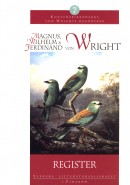 Konstnärsbröderna von Wrights dagböcker 1–7
Konstnärsbröderna von Wrights dagböcker 1–7
[The diaries of the von Wright brothers, Vols. 1–7]
Magnus von Wright: Dagbok [Diary] 1824–1834. 407 p., ill. ISBN 951-583-026-5
Magnus von Wright: Dagbok [Diary] 1835–1840. 470 p., ill. ISBN 951-583-040-0
Magnus von Wright: Dagbok [Diary] 1841–1849. 431 p., ill. ISBN 951-583-047-8
Magnus von Wright: Dagbok [Diary] 1850–1862. 496 p., ill. ISBN 951-583-060-5
Magnus von Wright: Dagbok [Diary] 1863–1868. 493 p., ill. ISBN 951-583-085-0
€ 46 each, hardback
Wilhelm & Ferdinand von Wright: Dagböcker [Diaries] 615 p., ill. ISBN 978-951-583-137-8.
€ 46, hardback
Index: 398 p., ill. ISBN 978-951-583-138-5. € 20, hardback
Helsinki: Svenska Litteratursällskapet i Finland, 1996–2010
Toimittaneet [Ed. by]: Anto Leikola, Juhani Lokki, Torsten Stjernberg, Johan Ulfvens
The three von Wright brothers, who came from a family with nine children in rural north Savo (in eastern Finland), shared a talent for meticulous observation combined with masterful technique and a romantic style. Each of these artists, who were active during the Biedermeier era, was a trailblazer in his own field: Magnus (1805–1868) as a proponent of Finnish national art, Wilhelm (1810–1887) as a wildlife illustrator, and Ferdinand (1822–1906) as a painter of landscapes and birds. Their contribution to Nordic ornithology is considerable. The index volume to the von Wright brothers’ diaries (which were written in Swedish) includes lists of their artworks and details of works held by collections abroad. This series is of significant cultural importance, and it is remarkable for its scientific accuracy. Five volumes consist of Magnus von Wright’s diary entries, which he wrote daily from 1820 up until his death. The sixth volume contains diary entries by the two younger brothers, which provide insights into the everyday life and society of that era, as well as the artists’ working practices and their relationship with nature.
The unmaking of Finland’s forests
17 March 2010 | Reviews
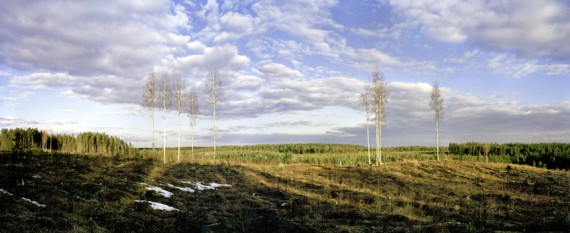
Natural landscapes? According to Metsähallitus, the government body charged with forestry, ‘the regeneration area is defined according to topography, in accordance with the landscape. Retention trees and groups of trees are always left standing in regeneration areas to enhance the landscape and to improve the survival chances of species that require old and decaying trees.’
Ritva Kovalainen & Sanni Seppo
Metsänhoidollisia toimenpiteitä
[Silvicultural operations]
Helsinki: Hiilinielu tuotanto ja Miellotar, 2009. 200 p., ill.
ISBN 978-952-99113-4-9
€ 43
Finns have a strong identity as forest people, partly because more than 95 per cent of them still speak an ancient hunter-gatherer language, Finnish, as their mother tongue. In spite of this cultural and historical background, Finland has become the world’s most eager and influential proponent of forestry models based on clear-cutting – felling all the trees in a particular area at one go and planting new trees to replace them. More…
Erkki Lampén: Neljä retkeä läpi Suomen [Four trips across Finland]
15 March 2010 | Mini reviews, Reviews
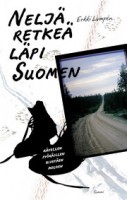 Neljä retkeä läpi Suomen. Kävellen – pyöräillen – hiihtäen – meloen
Neljä retkeä läpi Suomen. Kävellen – pyöräillen – hiihtäen – meloen
[Four trips across Finland. On foot – by bicycle – on skis – by kayak]
Helsinki: Tammi, 2009. 272 p., ill.
ISBN 978-951-31-4988-8
€ 25, hardback
In the spring of 2000, a downbeat 40-year-old man sat musing on the meaning of life when an idea suddenly came to him: why not walk from Helsinki to the Arctic Ocean? In his diary of this trek, which covered more than seven weeks and over a thousand kilometres, the journalist and writer Erkki Lampén describes the landscape, people, events and his own thoughts along the journey. Lampén made another three journeys (in 2003, 2004 and 2006) travelling by bicycle, on skis and by kayak, sleeping in a tent, in rustic cabins, in motels and hotels. His circular cycle journey aimed to follow Finland’s national borders as closely as possible; on skis he covered the distance from Porvoo on the south coast to Utsjoki in the far north; he then paddled his kayak from Lapland to the Gulf of Finland (this journey required plenty of wheeling the vessel from one river or lake to another). Lampén’s diary entries convey an entertaining blend of a realistic battle for survival, philosophising, joy, fury and humour.
Linnut vauhdissa [Birds caught in motion]
18 December 2009 | Mini reviews, Reviews
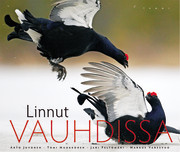 Arto Juvonen & Tomi Muukkonen & Jari Peltomäki & Markus Varesvuo
Arto Juvonen & Tomi Muukkonen & Jari Peltomäki & Markus Varesvuo
Linnut vauhdissa
[Birds caught in motion]
Helsinki: Tammi, 2009. 191 p., ill.
ISBN 978-951-31-4605-7
€ 39, hardback
Linnut vauhdissa features the work of several specialist bird photographers, contains astonishingly sharp photos of birds caught in mid-flight. This book breaks with convention by presenting surprising analogies and juxtapositions of photographs, thereby providing a more in-depth viewing experience than mere biological facts and identification of species. The majority of the photos were shot in Finland, where the Nordic light and winter snow offer unique qualities for nature photography. The preface was written by Hannu Hautala, arguably Finland’s best-known nature photographer. All of the photographers whose work is presented here are experienced birders. They also maintain a website that attracts many visitors, both from Finland and abroad.
Jorma Luhta: Tähtiyöt [Starry nights]
20 November 2009 | Mini reviews, Reviews
 Tähtiyöt
Tähtiyöt
[Starry nights]
Helsinki: Maahenki, 2009. 84 p., ill.
ISBN 978-952-5652-75-8
€ 41, hardback
Jorma Luhta (born 1951) is an award-winning Finnish nature photographer and author. The subject material of this book is night-time in the forests of northern Finland, illuminated by the stars and the Northern Lights. The problem of light pollution means that even in sparsely populated Lapland the lights from population centres can hamper the view over a radius of two hundred kilometres. Jorma Luhta’s photographs are the result of many years of dogged effort. The most impressive images of all were taken on the coldest night in a century: temperatures fell to around –50 °C. It takes split-second precision to achieve the greatest shots, such as when Luhta’s camera records a sheet of Aurora Borealis resembling Picasso’s white dove of peace (above). In his lyrical text Luhta, a night-time walker in the woods, observes his natural surroundings and contemplates such matters as his fear of the dark and feelings of isolation.
Sealspotting
14 June 2009 | Reviews
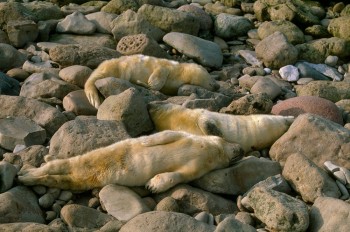
Zzzzzzz! In the grey seal kindergarten babies take a nap after dinner. – Photo: Seppo Keränen
Taskinen, Juha
Paluu Saimaalle
[Return to Lake Saimaa]
Helsinki: WSOY, 2009. 204 p., ill.
ISBN 978-951-0-33745-5
€ 38.90, hardback
Keränen, Seppo & Lappalainen, Markku
Hylkeet [The seals]
Helsinki: Maahenki, 2009. 151 p., ill.
ISBN 978-952-56-5266-6
€ 45, hardback
Sälar
Helsingfors: Söderströms, 2009.
151 p., ill.
Swedish translation: Annika Luther
ISBN 978-951-52-2603-7
€ 45, hardback
The private life of the species of seal that lives only in Lake Saimaa has been carefully investigated lately. Almost everything about this highly endangered species has been revealed, thanks to technological devices such as transmitters that can be glued to their backs…
STOP! WARNING: as I realise that not everybody wants to know what pinnipeds do in their spare time, I suggest you quit reading now, if you aren’t interested in the lives and fates of an obscure group of about 260 mammals that live in a lake in the remote west of Finland.
Laulujoutsenen perintö [The whooper swan’s inheritance]
9 April 2009 | Mini reviews
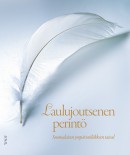 Laulujoutsenen perintö: ympäristöliikkeen taival
Laulujoutsenen perintö: ympäristöliikkeen taival
[The whooper swan’s inheritance: the journey of the environmental movement]
Editor-in-chief: Helena Telkänranta
Helsinki: Finnish Association for Nature Conservation and WSOY, 2008. 304 p., ill.
ISBN 978-951-0-32428-8
€ 42, hardback
The book presents the history of Finnish nature conservancy and the movement to promote it from the 18th century to the present day in essays by 43 authors. Although a number of prominent figures in Finnish society played an important role in the movement’s development, most of the actual work was done by dedicated nature-lovers. The conservationists of the early days hailed from the world of science, but since the 1970s the most active members of the movement have been environmental activists and government officials. The book discusses the different biotypes – forests, water habitat, swamps, Lapland habitat – and explores the country’s cultural landscapes and the relation of environmental protection to society. Many areas which are now considered important were rescued at the last moment. The book won Finland’s Nature Book of the Year Award for 2008.

